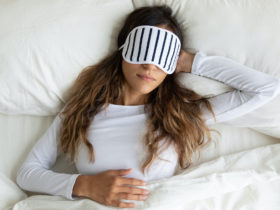Environmental toxins are everywhere and we all fight a daily battle to avoid ingesting, absorbing, and inhaling them. But women may have a bit more to worry about than men when it comes to protecting our health.
According to the Women’s College Hospital of Toronto, 80% – 90% of those affected by environmental toxins are women.
Women are more affected by environmental illness—those “invisible illnesses” like autoimmune disease, chronic fatigue syndrome, and fibromyalgia than men. Women also report more allergic reactions, respiratory ailments, skin hypersensitivity, and are more affected by air pollution than men.
There’s no single cause that puts women more at risk from toxins than men, but rather a combination of biological, cultural, and geographic factors that put us dead center in the line of fire.
Toxins are everywhere and accumulative; the term “body burden” is used to describe the heavy load of environmental chemicals found in the average person as a result of lifelong exposure to heavy metals, pesticides, fire retardants, VOCs, and more.
“I work with a lot of high-performing women exposed to even more toxins and stresses than the average person, and this is something we’re always talking about,” says Maggie Berghoff, a functional medicine practitioner and celebrity health consultant. “My standpoint is that I don’t want people to be afraid to live their life because they’re trying to avoid these scary toxins. What I do want them to do is consciously raise their standards, where they can, to reduce exposure as much as possible.”
We may have a greater health risk from toxins, but we are not powerless.
One of the biggest things you can do to support your health as a woman is to reduce your exposure to environmental toxins.
Reduce Toxins in Your Home
According to the World Health Organization (WHO), looking after a home and its inhabitants may increase women’s exposure to a variety of largely unregulated and often inadequately tested cleaning fluids such as bleach, detergents, insecticides, and pesticides.
“Because women tend to bear a higher burden of ‘second-shift’ responsibilities, which involve childcare and household tasks, there is a higher likelihood of exposure to toxic household cleaners that can significantly affect hormones,” says naturopathic doctor and holistic fertility specialist Dr. Aumatma.
Women are also exposed to Volatile Organic Compounds (VOCs) inside the home. VOCs include a variety of chemicals emitted by a wide array of products that pose short- and long-term health effects. Concentrations of VOCs are consistently higher indoors than out—in some cases, up to 10x higher, according to the Environmental Protection Agency (EPA).
Start In the Bedroom
“We’re exposed to toxins everywhere. Our air, our water, and our food all contain higher toxin levels than our bodies can handle. Therefore, it’s essential to create as clean an environment as possible in our homes,” says Board Certified Functional Medicine Health Coach, Julie Michelson. “There are toxins in just about everything. Our furniture and our bedding can be loaded with toxins and products that off-gas VOCs, and we spend so many hours a year in our beds,” says Michelson.
Smarthouse Collections founder Amy Smart also believes the bedroom is an essential first step when it comes to reducing toxic exposure. “I feel like there are so many hidden chemicals in everything we use, and we are so unaware of the toxic burden that’s slowly accumulating in our bodies,” says Smart.
“We spend nearly one-third of our lives in our beds, and for our kids, it’s even more,” Smart continues. “That’s why it’s so important to sleep on nontoxic bedding and mattresses and avoid chemicals in our clothing. We are resilient as humans, but a perfect storm of toxins will take any healthy person down given the time. Too many people are completely unaware that they are exposing themselves to these toxins in their everyday lives.”
Jamie Gold is the author of Wellness by Design and a designer specializing in creating healthier living environments. “If you can only address one area of your home at a time, I recommend starting in your bedroom since you spend the most time there,” Gold agrees.
“That can entail moving electronics out (they off-gas, too), replacing your mattress and bedding with organic alternatives, adding plants, and using an air purifier. If you’re remodeling, replace existing surfaces with healthier substitutes, like organic wool carpeting instead of synthetic, VOC-free paint, and certified cabinetry or furniture that doesn’t include urea-formaldehyde.”
Use “Cleaner” Cleaning Products
The Environmental Working Group’s investigation of more than 2,000 cleaning products found that many contain substances linked to serious health problems, including asthma, chemical burns, poisoning, and allergies, and can even elevate the risk of cancer and congenital disabilities.
“There is so much research out now showing that numerous products are known as endocrine disruptors: a chemical linked with developmental, reproductive, brain, immune, and other problems,” says wellness blogger Peggy Soloman from Live Life Less Toxic.
“And, sadly, women use many of these daily. Endocrine disruptors can be found in household cleaning products, cosmetics, everyday products, and detergents, just to name a few.”
Dr. Villanueva agrees. “Toxins are found in our everyday consumables,” she warns. “Our laundry detergent, perfumes, deodorants, household cleaners, carpets, and upholstery, hand soaps, makeup, and even hand sanitizers all contain toxins known to cause the very diseases and chronic conditions we see on the rise.”
Ditch the conventional cleaning products in favor of less toxic alternatives. Check the EWG’s Guide to Healthy Cleaning to find cleaning products that are safer for you and your household. Or make your own at home; you’d be surprised how many things you can clean with white vinegar.
Put Fewer Toxins in Your Body
Our biology also plays a role in women’s increased susceptibility to environmental toxin exposure. Environmental pollutants such as PCBs, dioxins, and organochlorine pesticides accumulate more heavily in fatty tissue.
Women, on average, tend to have higher body fat percentages than men, and every time we lose weight, environmental toxins release from those fatty tissues into our system—which is not great news for yo-yo dieters.
“Due to the structural makeup of the female body, women are prone to larger quantities of adipocyte cells specialized for the storage of fat,” says Dr. Aumatma.
Estrogen, a hormone found in higher quantities in most women, increases the number of adipocyte cells in the body.
And these cells are a storage site for toxins.
“It’s a survival mechanism of the body to hide toxins away in these cells,” Dr. Aumatma explains. “Unfortunately, increased levels of persistent toxins will increase the number of adipocyte cells in the body, creating a cyclical loop resulting in increased toxin accumulation.”
Even hormonal changes during menstruation can make women more vulnerable to environmental threats. Fluctuating progesterone levels during the menstrual cycle are believed to make women more susceptible to ozone exposure.
The unfortunate truth is this:
Women are at a biological disadvantage when it comes to absorbing—and holding onto—toxins. Therefore, we may have a greater responsibility to reduce the toxins that we’re putting directly into our bodies.
Beware of Water Contaminants
Research by the Environmental Working Group shows that the nation’s water supply is under assault from a toxic stew of pollutants, including toxic fluorinated chemicals called PFAS, lead from old pipes, farmland runoff that carries millions of tons of pesticides and fertilizer chemicals into rivers and streams, and many more.
“Most tap water contains a very long list of chemicals that can accumulate in our bodies through time,” warns Aida Garcia, a nontoxic living consultant.
Everyone deserves safe, clean drinking water. Unfortunately, you may have to invest in a home water filter system to get it.
“Ideally, we would all be investing in an under-the-sink two-stage filter or reverse osmosis filter to remove chlorine, heavy metals, prescription drugs, fluoride, nitrates, perchlorate, PFAS, radium, and more,” says Garcia.
Eat Organic Foods
Eating foods that are certified organic or organically grown by local farmers can help reduce your toxic burden.
Researchers from the University of California-Berkeley found that switching to an organic diet significantly reduced the levels of synthetic pesticides found in all participants in just one week. The most significant declines in the study involved organophosphates, a class of highly neurotoxic pesticides that are linked to brain damage in children.
Avoid Alcohol
The old advice that “a glass a day of red wine is beneficial for your health” has been proven to be completely untrue. Not only have the risks and harms of alcohol been well-proven, but a 2023 study revealed there is no safe level of alcohol use.
Alcohol use causes your pancreas to produce toxic substances, and it has been linked to several types of cancer, according to the National Institute of Alcohol Abuse and Alcoholism.
Sure, date night or girls’ night out feels like a lot more fun when you add a glass of wine or a cute cocktail. But if you’re serious about protecting your health, it might be time to find some non-alcoholic replacements for your favorite drinks.
Take the Toxins Out of Personal Care Products
Women in the U.S. apply an average of 168 chemicals to their faces and bodies every day, between cosmetics, perfumes, personal care products, and feminine hygiene products, according to the Environmental Working Group.
“Americans assume personal care products on the market today have been tested or approved by the federal government. However, they are largely unregulated.
In fact, it has been more than 80 years since Congress last updated the federal law designed to ensure the safety of personal care products. The Food and Drug Administration doesn’t even require basic safety testing of ingredients in personal care products before they are used,” the EWG warns.
Your skin can absorb ingredients from personal care products. Teams of chemists are behind each of your skincare products, working diligently to ensure helpful ingredients such as Vitamin C, hyaluronic acid, and other anti-aging ingredients can penetrate your skin and be fully absorbed.
But you can’t take the good without the bad; the skin’s absorbent properties also allow toxic chemicals from personal care products to penetrate the skin and enter into your bloodstream.
“It’s so common to find endocrine disruptors like parabens and phthalates in personal care products,” warns Cynthia Thurlow, nurse practitioner and functional nutritionist. “They can impact our hormones in detrimental ways; they can contribute to imbalanced sex hormones (more estrogen than progesterone), inflammation, and weight gain.”
Educate Yourself About Safer Cosmetics
Thurlow is concerned about the failure of the U.S. to protect consumers, compared to the E.U. and Canada. She recommends using the EWG Skin Deep database to find nontoxic personal care products. “Educate yourself about ingredients to avoid and find safer alternatives.”
Really educating yourself about the ingredients in your personal care products sounds like a big endeavor. But it’s definitely worth it. In one interventional study, researchers found that just three days of using products free of phthalates, parabens, triclosan, and oxybenzone resulted in a significant reduction of these endocrine-disrupting chemicals in adolescent girls.
You don’t have to overhaul your life right this moment to eradicate your exposure to environmental toxins. But you can start moving in the right direction by educating yourself about the everyday products that contain harmful chemicals and by finding safer, more nontoxic alternatives that support the health of women and girls everywhere.
This post was updated for 2024 to reflect current research on women’s health.











Join the GloWell Community on Social!
Don't risk missing a single thing. Follow us on social and become part of the GloWell community.